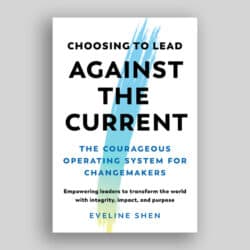James Stauch’s book is a great way to learn about the basics of systems and their role in the world, society, and personal lives, and will help anyone, anywhere who wants to address real-world issues and problems, reviewer Peter Elson writes.
The 55 Minutes: An Atlas to Navigate Problems, Reveal Systems, and Ask Beautiful Questions in a Radically Shifting World, by James Stauch, with Anna Johnson and Daniela Papi-Thornton. ATCO Ltd, 2025; 548 pages; ISBN 978-1069483515.
In 1830, mathematician and astronomer John Herschel, son of William Herschel (a composer and, later, astronomer who discovered the planet Uranus), wrote a book called A Preliminary Discourse on the Study of Natural History. It went on to become a bestseller, the first primer on the scientific method, encompassing not only a passionate argument for the value of science in relation to religion, but also a careful analysis and explanation of the principles and methods of scientific investigation. Herschel argued that science originates in observation and experimentation, and he did so through a series of case studies of both methodologies and experiments pertaining to astronomy, optics, geology, biology, and chemistry. Two examples are his specific directives concerning the architecture of classification and the necessary steps in making accurate experimental observations.
While A Preliminary Discourse was written almost 200 years ago, an eerie parallel can be drawn between it and The 55 Minutes by James Stauch and his colleagues Anna Johnson and Daniela Papi-Thornton. The 55 Minutes is a contemporary primer on the nature, scope, examination, and practice of systems. The book takes its premise from a statement by Albert Einstein to the effect that if he had one hour to solve a difficult problem (and if his life depended on it), he’d spend the first 55 minutes of the hour thinking about the problem and the last five minutes trying to solve it. Stauch and colleagues spend this same proportion of time exploring the nature, scope and practice of systems with a nominal nod to solving problems. The book is written in a style that is informative, inviting, and accessible. This is a book that invites you to take “chewable chunks” and digest them at a pace that suits.
Divided into three sections (foundations, tools, the last five minutes), the book provides a firm grounding on the nature of problem-solving in general and systems in particular, followed by a profile of a wide variety of tools to assist in identifying, exploring, and analyzing systems. The book draws from the wide range of experiences of the authors in academic as well as private and non-profit-sector settings. Readers are invited to position themselves in relation to systems and then address the book’s content (or not) as appropriate. There’s no magic bullet here; the book provides an analysis of system ingredients, their origins, and contextual applications as well as recipes, but the menu, dear reader, is up to you.
Talking of recipes, more than 30 system analysis tools are profiled across 11 chapters that start with generally a macro analysis by framing the system and its landscape, roots, origins, and futures. Latter tools tend to focus, although not exclusively, on micro elements of system analysis such as human experience, relationships, power, narrative, and leverage. Each tool comes with explicit examples of how the tool has been used and an invitation to “try it!” The tools section, while the amplest part of the book, comes with an invitation to review and select tools based on a specific problem or passion to be addressed.
First and foremost, this is a book that is both a primer and a mentor – a great way to learn about the basics of systems and their role in the world, society, and personal lives while also using the book as a support to address real-world issues and problems. That said, the tools section makes a lot more sense if one reads the foundations section of the book first. The audience for this book, in my view, is anyone, anywhere who has their eyes set on making a sustained and worthwhile difference, prepared to abandon old truths in the face of new realities of complexity and honest self-awareness.
An index would have been very helpful. The lack of one makes the book tricky to navigate. However, no trickier, I imagine, than plunging into the complex world of problems and systems. What this book does make clear is that the status quo of a results-driven orientation that pays lip service to problem analysis is penny wise and pound foolish. Take the advice of the authors: take time to zoom out and see the bigger picture before zooming back in to address looming deadlines and manage problems. Reading this book is a way to zoom out, and it will be time well spent.
Full disclosure: Peter Elson was a senior research fellow at the Institute for Community Prosperity from 2008 to 2018. James Stauch joined the institute in 2013.


